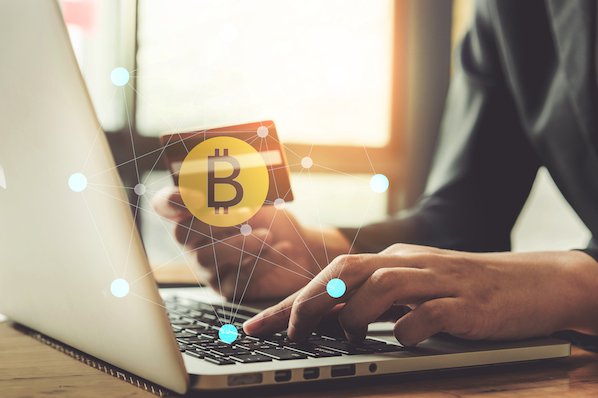What is Bitcoin? How else would these institutions and businesses make money? Instead, you use bitcoin wallets. A bitcoin wallet is like a physical wallet. But instead of storing the currency itself, your wallet stores all your private key(s) which are linked to the bitcoins you can spend. Software Bitcoin Wallets Software wallets include desktop, online, and mobile wallets. How to Spend Bitcoin When you set up your bitcoin wallet, you’ll create a public bitcoin address. Wallet scams. Mining scams. Exchange scams.
Bitcoin celebrates its tenth birthday on January 9, 2019.
The first official purchase made with bitcoins was of two pizzas in Jacksonville, Florida — sold for 10,000 BTC. Today, that amount is worth about $33.7 million — and Bitcoin owners are purchasing a lot more than pizza.
Crazy, right?
Bitcoin has become an albeit invisible commodity in our society. It offers greater security and lower transaction fees for consumers and businesses alike and holds the potential to equip a global economy.
As business owners and merchants, we should be familiar with Bitcoin, and how to get it, store it, and use it.That’s why we built this guide.
Below, you’ll read about the history of Bitcoin, how to procure it, and how to store and use it. Use the chapter links to jump ahead.
What is Bitcoin?
Bitcoin (denoted “₿”) is a both a technology and digital currency — commonly called the “currency of the internet”. Bitcoin isn’t controlled by a government or financial institution … so there are no banks associated with the cryptocurrency. Purchases and exchanges using bitcoins are made directly between anonymous Bitcoin owners on the blockchain; the system uses no account numbers, names, or other identifiers.
It’s no coincidence that Bitcoin was invented so soon after the housing market crash in 2008. With no corporate middleman or closeted transactions, Bitcoin leaves little room for corruption — something that can’t be said about other financial institutions.
It also cuts out unnecessary fees and makes it easy to transfer bitcoin funds all over the world.
Think about it. When you transfer money through banks or institutions, you end up paying a lot of fees … such as currency conversion fees, bank service fees, and deposit or transaction fees to payment gateways like PayPal or Stripe. How else would these institutions and businesses make money?
Bitcoin, on the other hand, is transferred digitally, directly, and anonymously. It puts the power back into hands of the buyers and sellers.
Bitcoin to USD
To make sense of this whole “digital currency” thing, let’s compare it to the very well-known and sometimes well-loved US dollar.
Bitcoin has come a long way in the last decade. When it was created, one bitcoin (₿1)was worth $0.008 USD. In five days, the price rose by 900% to $0.08 USD.
Don’t have $3,300 to spend in one place? Bitcoins are divided into sub-units called satoshis; each satoshi is worth ₿0.00000001. (For reference, $1 USD is equal to 29,174 Satoshi.)
Bitcoin Terms to Know
Bitcoin is a complex technology and currency. (Yes — it’s both.) To better understand this guide, here are a few Bitcoin terms to know.
Blockchain
Bitcoin transactions are recorded on blockchain, a public record used to verify bitcoin transactions and prevent scams. Transactions are recorded on blocks; a new block is added to the chain roughly every 10 minutes. Learn more about blockchain in the video below.
A bit is a sub-unit of Bitcoin, formally known as microbitcoins. Where a satoshi is ₿0.00000001, a bit is ₿0.000001 … ₿1 equals 1,000,000 bits. 1 USD equals about 295 bits.
Bitcoin capitalized refers to the currency and technology as a whole. When bitcoin isn’t capitalized, it’s in reference to the unit of currency. It’s also abbreviated using BTC or XBT.
Confirmation
Confirmation happens when a transaction has been processed by the network and is recorded onto a block. Multiple confirmations occur as transactions are recorded onto subsequent blocks, and each transaction decreases the risk of a reversed transaction.
Cryptography
Cryptography is the act of writing in or deciphering code. Its a type of mathematics and allows us to create secure transactions and online environments, i.e. “encrypted” accounts or wallets.
Mining is a metaphor for Bitcoin’s proof of work system — where miners solve the math problems that validate every bitcoin transaction in exchange for bitcoins. These complicated mathematical calculations also increase security and subsequently release newly created bitcoins. It’s not unlike physical mining for gold or jewels, except it’s done using various mining hardware and mining software. Mining is only one way — the hardest and most profitable way — for you to get bitcoins. The block reward for solving these math problems is 12.5 tokens — the equivalent of over $40,000 today. Like the US dollar, there’s a limited number of bitcoins floating around the economy. There are currently 15 million in existence … with a cap of 21 million, that leaves only 6 million more bitcoins to mine.
A private key is a confidential piece of data that verifies your right to spend bitcoins from a specific wallet. It’s like a Bitcoin password. Each wallet is associated with its own private key.
Signature
A signature is a piece of cryptography that verifies your bitcoin ownership — it’s the public-facing side of your private key. But don’t worry, cryptography ensures that no one can guess or decipher your private key or other data.
How to Buy and Earn Bitcoin
There are a number of ways to get, earn, and buy bitcoins for yourself. But just because bitcoin is…

COMMENTS